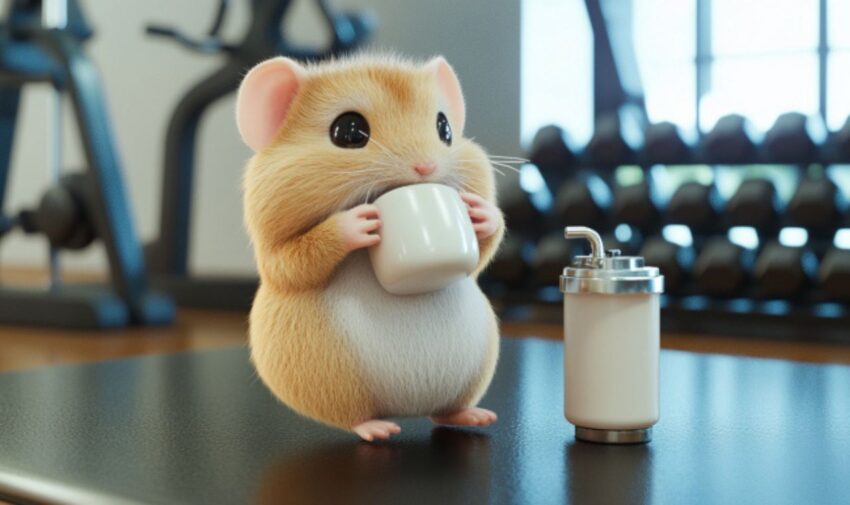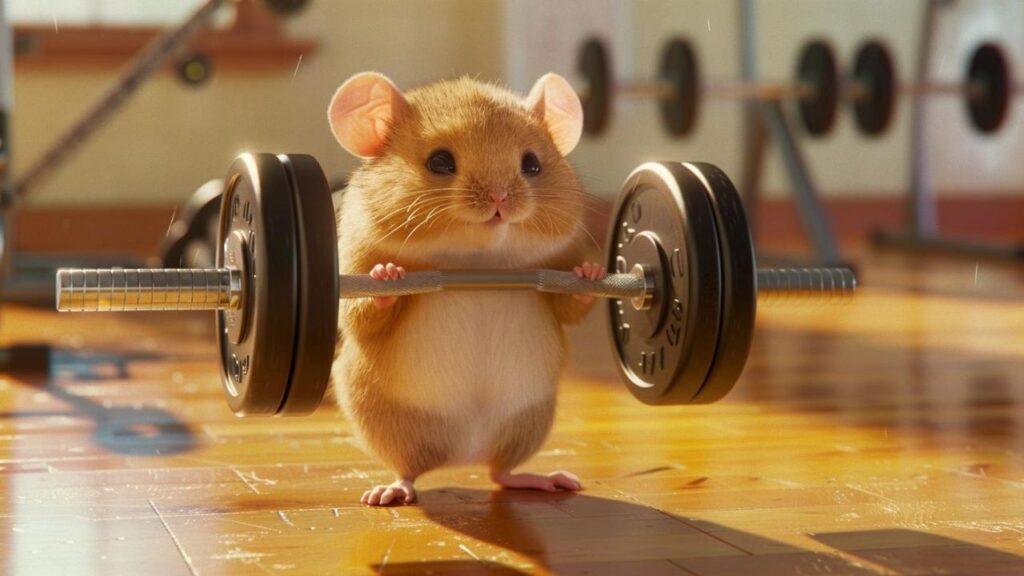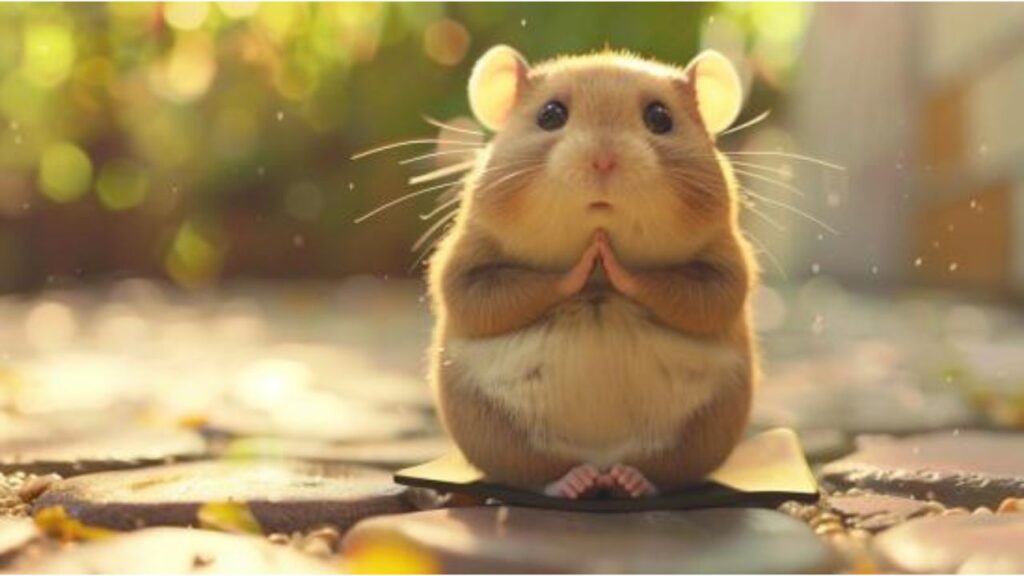Well, hello there, my darling hamster-loving friends! Welcome to Granny SnuggleSnacks’ cozy corner, where we sprinkle a little love and a whole lot of knowledge about caring for your precious fluffballs. Today, we’re diving into a topic that’s absolutely vital for keeping your hammy happy, healthy, and full of zoomies—protein!
Protein is one of the building blocks of life, and it’s just as important for your pint-sized fur baby as it is for us humans. Whether your hamster spends their days running marathons on their wheel, climbing up their cage like a tiny gymnast, or just exploring every nook and cranny of their habitat, they need the right fuel to keep that adorable energy going. That fuel, my dear, is protein!
Active hamsters, especially young or growing ones, need protein to build strong muscles, maintain their fur’s glossy shine, and power up their tiny bodies for all those adventurous shenanigans. But here’s the trick—just like with anything, it’s all about balance. Too little protein can leave your hamster feeling sluggish, while too much can upset their delicate systems.
In this article, I’m here to guide you through why protein is so important, how to spot when your little one needs a boost, and how to add just the right amount of high-protein snacks to their diet. So, fluff up your favorite cushion, grab a cup of tea, and let’s make sure your furry darling is ready to take on the world, one tiny pawstep at a time!
Why Protein is Essential for Hamsters
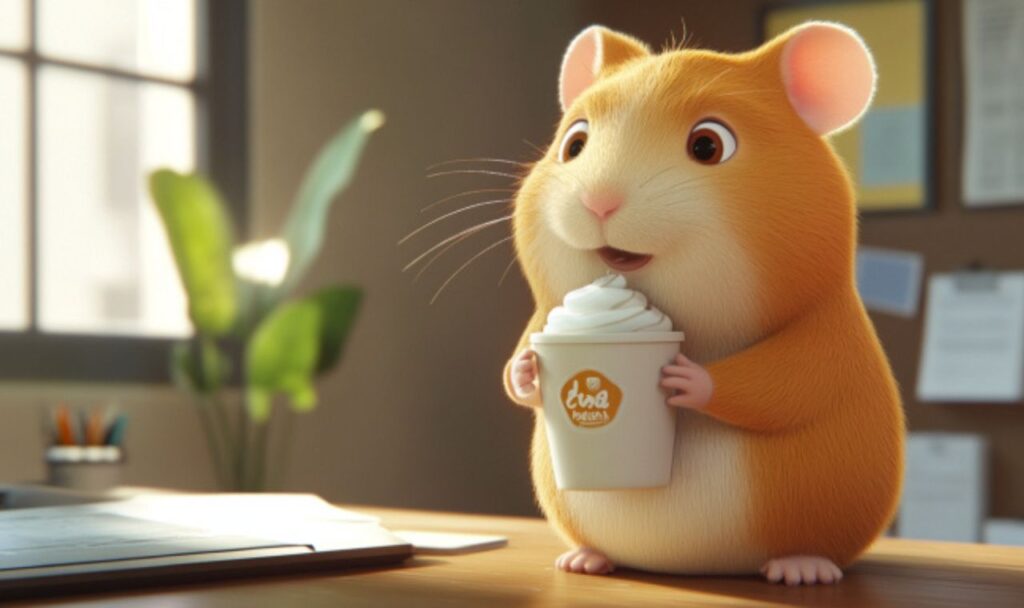
When it comes to keeping your hamster happy and thriving, their diet plays a starring role. And among the key nutrients they need, protein stands out as a true powerhouse. It’s not just about filling their tummies—it’s about fueling their little bodies with everything they need to grow, play, and stay healthy. Let’s take a closer look at why protein is so important for these adorable critters.
Understanding Hamsters’ Nutritional Needs
Just like us humans, hamsters need a balanced diet to lead healthy and active lives. While their diet should include a variety of nutrients, protein is especially important. Why, you ask? Because protein is the building block for nearly everything in their tiny bodies!
For starters, protein supports growth and development, making it crucial for younger hamsters who are still growing and building strong muscles. But even adult hamsters benefit from protein because it helps maintain their muscle health, keeps their organs functioning properly, and powers their daily activities.
Let’s not forget energy! Protein is a key source of fuel for your hamster. While carbohydrates provide quick energy, protein offers longer-lasting, sustainable power that keeps your furry athlete zooming around their habitat or climbing to new heights. Without enough protein, your hamster might feel sluggish, and their overall health could suffer.
Active Hamsters Need Extra Fuel
Now, my dears, let’s talk about those little explorers who seem to have an endless supply of energy. Whether it’s running on their wheel until it’s practically a blur or digging tunnels like a tiny construction worker, active hamsters burn more calories and nutrients than their less-active friends. And do you know what that means? They need more protein to keep up with their busy little lives!
Young hamsters, in particular, are in a constant state of growth and activity. These energetic youngsters need extra protein to develop their muscles, strengthen their bones, and fuel all those curious adventures. Without the right amount of protein, active hamsters can lose energy quickly, their growth may slow down, and they might even become more prone to illness.
Even adult hamsters, especially those who are naturally more active or have larger habitats to explore, can benefit from a slight boost in protein to match their activity levels. Think of it as giving your hamster the perfect snack before their next wheel marathon!
Too Much of a Good Thing?
Ah, but here’s where we need to tread carefully, my sweet hamster parent. While protein is essential, too much of it can do more harm than good. Hamsters have tiny, sensitive systems, and overloading them with protein can lead to health problems.
For instance, an excess of protein can strain their kidneys, which work hard to process it. This can eventually lead to kidney damage or other complications, particularly in older hamsters. Too much protein can also result in weight gain, as those extra nutrients get stored as fat when they’re not needed for energy.
So, how do we find the balance? A healthy hamster diet typically includes around 12–18% protein, depending on their age, activity level, and species (dwarf hamsters and Syrians have slightly different needs). The key is to provide small, measured portions of high-protein foods alongside their regular diet. By doing this, you’ll keep your furry friend healthy, energized, and ready for all their tiny adventures!
See, my dear, protein is a little like sunshine—absolutely necessary for life, but too much can leave us a bit crispy! So, let’s make sure your hamster gets just the right amount to keep them thriving and shining like the little star they are.
Signs Your Hamster Needs a Protein Boost
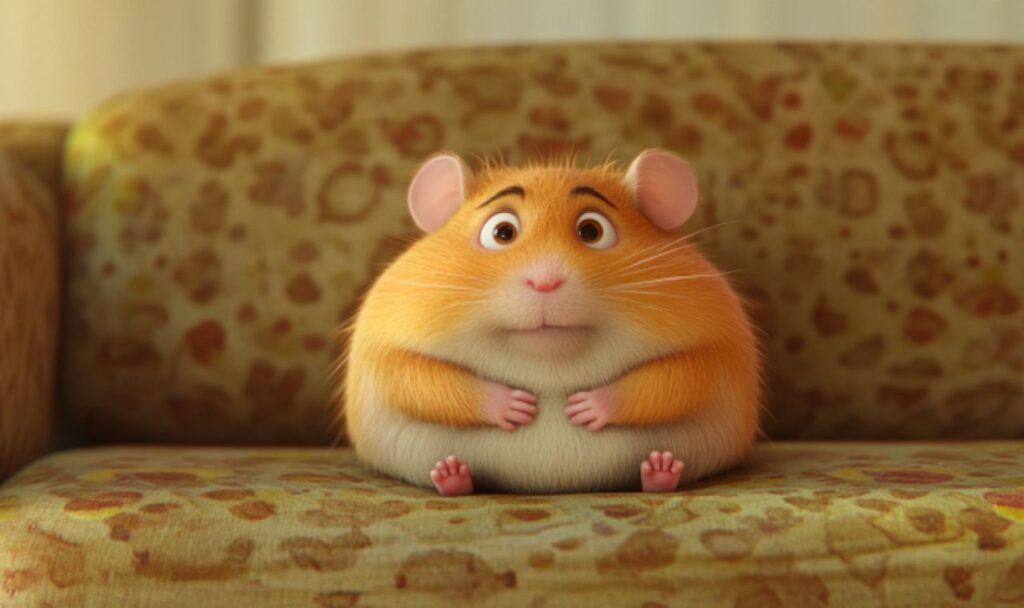
As hamster parents, it’s our job to pay close attention to the little signs our furry friends give us about their health. Since protein is such an essential part of their diet, a deficiency can quickly start to show in several ways. If your hamster seems a little “off,” it might be time to consider whether they’re getting enough protein to support their active, happy lifestyle. Let’s take a closer look at the key signs that your hamster might need a little extra protein in their diet.
Low Energy Levels
Hamsters are naturally curious and active creatures, often bustling around their habitats with a sense of purpose (even if that purpose is just stuffing their cheeks with snacks). But if your little one starts spending more time curled up in their nest than exploring or running on their wheel, it could be a sign of low energy levels.
Protein provides hamsters with the fuel they need to maintain their activity. Without enough of it, their energy reserves start to run low, leaving them feeling tired and lethargic. This isn’t just about skipping wheel time—your hamster may also seem less interested in exploring their habitat or interacting with you during playtime. If you’ve noticed your usually lively fluffball acting sluggish, it might be time to evaluate whether their diet has enough protein to keep them moving.
Poor Coat Quality
Your hamster’s fur is one of the best indicators of their overall health. A healthy hamster will have a soft, shiny coat that feels pleasant to the touch, but a protein deficiency can quickly change that. Without enough protein in their diet, hamsters may develop a dull, patchy, or brittle coat that lacks its usual luster.
Protein is a key player in maintaining the health of their fur, as it helps produce the keratin that makes their hair strong and shiny. If your hamster’s coat suddenly seems rough, dry, or prone to shedding, it could be a sign that their protein intake needs a little boost. A dull coat doesn’t just affect their appearance—it’s also a sign that their body isn’t getting the nutrients it needs to stay in top shape.
Weight Loss or Poor Growth
Protein is crucial for building and maintaining muscle, so if your hamster isn’t getting enough of it, you may notice some changes in their weight or overall body condition. Young hamsters, in particular, need plenty of protein to support their growth. If a growing hamster isn’t meeting their protein needs, they may appear smaller or less developed than they should be for their age.
In adult hamsters, a lack of protein can lead to gradual weight loss or a “skinny” appearance, even if they’re eating other foods. Since protein plays such a vital role in maintaining muscle mass, its absence can leave your hamster looking and feeling weaker. This can also make them more prone to illnesses, as their bodies don’t have the resources they need to fight off infections or stay strong.
If you’ve noticed weight loss, stunted growth in a young hamster, or just an overall frail appearance, it’s time to take a closer look at their diet. Adding a little extra protein could make all the difference in helping them bounce back to their happy, energetic selves.
By keeping an eye on these signs, you’ll be well-equipped to spot when your hamster needs a little dietary adjustment. Protein might be small in size, but its impact on your hamster’s health and happiness is huge!
The Best High-Protein Foods for Hamsters
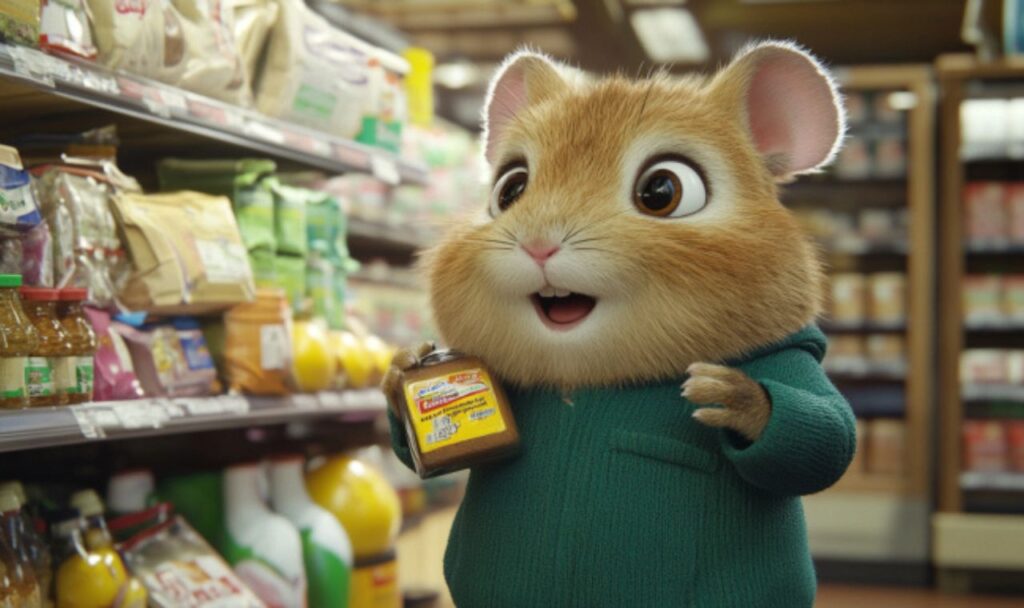
When it comes to providing your hamster with the protein they need, there’s no shortage of delicious options to choose from. But, as with anything for our tiny companions, we need to be careful about what we offer to ensure it’s both safe and nutritious. Whether you prefer the convenience of store-bought items, the wholesomeness of natural foods, or the joy of making something special at home, there’s a high-protein snack to suit every hamster and every household. Let’s take a closer look at the best options available to keep your hamster healthy and happy.
Store-Bought Options
For hamster parents who like to keep things simple, pet stores offer a variety of high-protein foods that are specially formulated to meet your hamster’s needs. These options are convenient, safe, and often fortified with other essential nutrients to support your little one’s overall health.
One of the most popular choices is pelleted hamster food, which typically contains a mix of grains, seeds, and proteins like soy or dried mealworms. Many high-quality hamster food brands include just the right amount of protein to balance your hamster’s diet without overwhelming their tiny system. Be sure to check the label for a protein content between 12–18%, which is ideal for most hamsters.
Another excellent store-bought option is freeze-dried insects, such as mealworms or crickets. These are a fantastic source of animal protein and mimic what hamsters might eat in the wild. They’re also easy to store and serve, making them a great option for busy hamster parents. Just make sure they’re specifically marketed for pets, as wild-caught insects may carry harmful bacteria or parasites.
Natural Protein Sources
If you love the idea of giving your hamster fresh, wholesome food, there are plenty of natural options that pack a protein punch. These options are not only healthy but also add variety to your hamster’s diet, keeping things exciting for their little taste buds.
Seeds and nuts are a fantastic source of natural protein. Sunflower seeds, pumpkin seeds, and almonds (unsalted and plain) are all hamster-safe and packed with protein. However, these should be given in moderation because they are also high in fat. A small seed here and there can make for a lovely, nutritious treat.
For those who want to explore animal-based proteins, small amounts of hard-boiled egg or plain, cooked chicken are excellent choices. These foods are rich in protein and easy for hamsters to nibble on. Just remember, these should be offered in tiny portions (about the size of your hamster’s pinky nail) and no more than once or twice a week to avoid upsetting their stomachs.
If you’re a fan of dairy, a tiny bit of plain, unsweetened yogurt or low-fat cottage cheese can also be a great protein boost. Be sure to choose options with no added sugars or artificial flavors, as these can be harmful to your hamster.
Special Treats for a Protein Boost
Now, let’s talk about those extra special treats that will make your hamster’s whiskers wiggle with excitement! Homemade high-protein snacks are a wonderful way to add a little extra love to their diet while ensuring every ingredient is safe and healthy.
One fun option is to make hamster-safe protein balls by mixing ingredients like crushed oats, a pinch of plain yogurt, and a sprinkle of crushed sunflower seeds. Roll them into tiny, pea-sized balls for a perfect, bite-sized snack. Another homemade treat idea is mini egg bites—simply bake a tiny portion of beaten egg (without any oil or seasoning) and cut it into hamster-sized pieces.
For rare indulgences, you can even offer your hamster a bit of tofu. It’s a wonderful plant-based protein option that’s soft and easy to eat. Be sure to use plain tofu with no seasoning, as even small amounts of salt or spices can be harmful to your furry friend.
When offering treats, it’s always important to keep portion sizes small and remember that treats should make up no more than 10% of your hamster’s overall diet. These special snacks are a wonderful way to bond with your hamster and show them just how much you care!
By mixing store-bought options, natural foods, and special treats, you can ensure your hamster gets all the protein they need while enjoying a varied and delicious diet. Just imagine their tiny smiles as they munch away—absolutely priceless!
How to Incorporate Protein into Their Diet
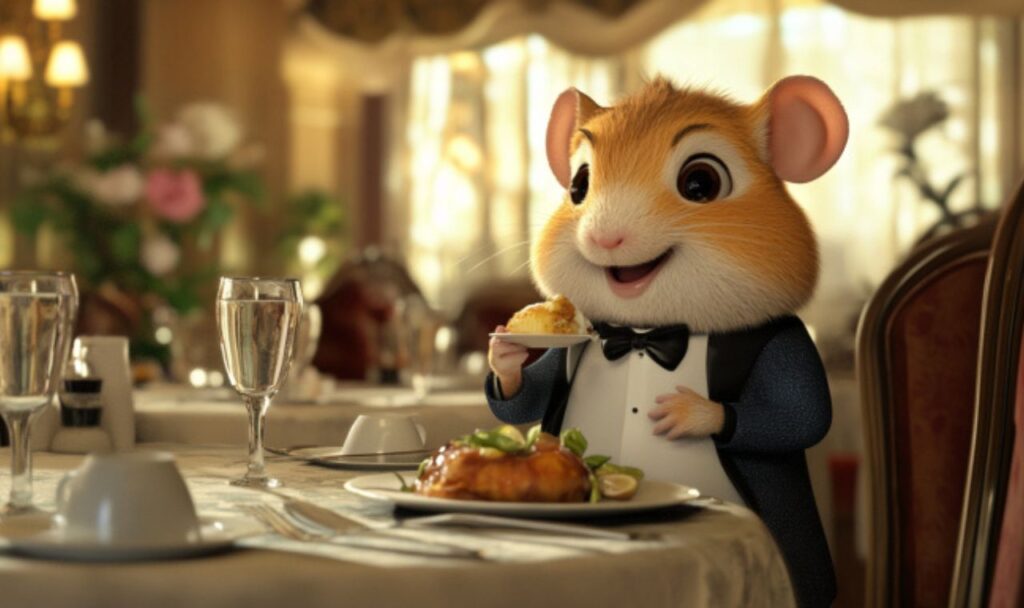
Now that we know how important protein is for our furry friends and what foods can provide it, the next question is: how do we incorporate protein into their diet in the best way possible? Hamsters have tiny tummies and delicate systems, so it’s important to approach their meals with care, keeping everything balanced and appropriate for their size. With the right techniques, you can ensure your hamster gets all the protein they need without overdoing it. Let’s explore how to add that protein power into their diet while keeping things healthy and delicious!
Portion Sizes Matter
When it comes to feeding hamsters, size really does matter! Remember, our hamsters are small creatures with even smaller stomachs, and their dietary needs are much different from ours. Overloading their diet with too much protein, even from healthy sources, can lead to digestive issues, kidney strain, or unhealthy weight gain. This is why portion control is so important.
A general rule of thumb is that protein-rich snacks should only make up about 10% of their overall diet. For example, if you’re offering mealworms, one or two dried mealworms are usually enough for a Syrian hamster, while a dwarf hamster might only need one. If you’re giving them a bit of hard-boiled egg or plain chicken, a piece no larger than their pinky nail is a perfect serving size. For seeds or nuts, one or two sunflower seeds or a small pinch of pumpkin seeds is plenty.
Always keep an eye on your hamster’s weight and activity level to determine if their portion sizes need adjusting. If they seem to be gaining weight or losing their usual energy, it might be a sign to reduce the amount of protein or adjust their overall diet.
Mixing Protein with Other Foods
Protein is important, but it should always be part of a balanced diet. Hamsters need a mix of protein, carbohydrates, fiber, vitamins, and healthy fats to thrive. Instead of serving protein on its own, try blending it with other components of their regular meals for variety and balance.
For instance, you can sprinkle a few dried mealworms into their daily mix of seeds and pellets. Or, if you’re serving fresh foods like a small piece of boiled egg or chicken, pair it with some fresh vegetables like a slice of cucumber or a bit of broccoli. This not only ensures they get a mix of nutrients but also makes snack time more interesting for them.
Hamsters are natural foragers, so scattering a small protein treat among their regular food encourages their instinct to explore and scavenge. This provides mental stimulation as well as nutritional variety. Remember to introduce new protein sources gradually to avoid upsetting their digestive system, and always observe how they respond to new foods.
Snack Time Tips
Timing is everything when it comes to feeding high-protein snacks to your hamster. Hamsters are most active in the evening and nighttime hours, which makes these the best times to offer their protein-rich treats. During these active periods, their bodies are burning more energy, and a well-timed snack can help fuel their adventures.
Avoid offering protein snacks too close to their bedtime or during the day when they’re likely to be resting. Eating a heavy or protein-rich snack before they settle down can disrupt their digestion or leave them feeling uncomfortable.
It’s also a good idea to keep protein snacks as occasional treats rather than daily offerings. Most hamsters get the majority of their protein needs from their regular pellets or seed mixes, so the snacks you provide should act as a supplement rather than a main source of nutrition. Offering high-protein foods two to three times a week is usually plenty for most hamsters.
And don’t forget to monitor their stash! Hamsters are natural hoarders, and they may tuck uneaten snacks away in their hideouts. Protein-rich foods like chicken or egg can spoil quickly, so be sure to check their cage regularly and remove any perishable items before they go bad.
By keeping portions small, mixing protein with other nutritious foods, and offering treats at the right times, you’ll help your hamster enjoy a balanced and satisfying diet. They’ll be bouncing around with energy and showing off their shiny coats in no time!
Maintaining Balance in an Active Hamster’s Diet

As hamster parents, one of the most important things we can do is provide our furry friends with a balanced diet that meets all their nutritional needs. While protein is a key part of keeping your hamster healthy and active, it’s just one piece of the puzzle. To ensure your hamster thrives, it’s essential to combine proteins with other nutrients, watch for changes in their weight, and seek professional guidance when necessary. Let’s explore how to maintain the perfect balance in your active hamster’s diet and keep those tiny paws happy and energetic!
The Role of Variety
When it comes to feeding your hamster, variety is the spice of life—and a key to their health. While protein plays an important role in their diet, hamsters also rely on a mix of other nutrients, including carbohydrates, fiber, vitamins, and minerals, to stay healthy and strong. Providing a wide range of foods not only ensures that they get the nutrients they need but also keeps mealtime exciting for your little fluffball.
Carbohydrates are your hamster’s primary source of quick energy, while fiber promotes healthy digestion. Foods like oats, whole grains, and fresh vegetables are excellent sources of these nutrients and pair beautifully with protein-rich options. For example, you could offer your hamster a small piece of hard-boiled egg alongside a slice of cucumber or a tiny portion of cooked sweet potato. This kind of balanced snack provides energy, hydration, and protein all in one go.
Vitamins and minerals are equally important for supporting your hamster’s immune system, keeping their coat shiny, and maintaining their overall well-being. Fresh vegetables like spinach, broccoli, and carrots are great sources of these nutrients and can complement protein treats like mealworms or tofu. By combining protein with a variety of other foods, you’ll create a well-rounded diet that supports your hamster’s health and keeps their taste buds happy.
Variety also mimics the way hamsters eat in the wild, where they forage for a wide range of foods to meet their nutritional needs. Offering different types of foods encourages your hamster’s natural foraging instincts and provides mental stimulation, which is just as important as physical health for these curious little critters.
Watching for Weight Gain
While protein is essential for your hamster’s health, it’s important to remember that too much of a good thing can lead to problems. Protein-rich foods are often high in calories, and overfeeding them can result in weight gain. This is especially true if you’re offering snacks like sunflower seeds, nuts, or mealworms, which are both protein-packed and calorie-dense.
A chubby hamster might look adorable, but excess weight can put strain on their tiny bodies and lead to health issues like heart problems, joint pain, and a shortened lifespan. If you notice that your hamster is gaining weight, it’s a sign that you may need to adjust their diet by reducing portion sizes or cutting back on protein treats.
To keep your hamster at a healthy weight, monitor their activity level and body condition regularly. A healthy hamster should have a rounded but not overly pudgy shape, and you should be able to feel their ribs gently when you touch their sides. If they’re starting to feel a little too soft or round, it’s time to review their diet and make sure they’re not getting too many calorie-rich snacks.
In addition to portion control, providing opportunities for exercise can help keep your hamster fit. Make sure they have access to an appropriately sized wheel, climbing toys, and space to explore so they can burn off any extra calories and stay active.
When in Doubt, Consult a Vet
No matter how much we learn about hamster nutrition, every little fur baby is unique. Their dietary needs can vary based on their species, age, activity level, and overall health. If you’re ever unsure about your hamster’s diet or notice changes in their weight, energy levels, or behavior, it’s always best to seek advice from a veterinarian who specializes in small animals.
A vet can help you determine whether your hamster’s current diet is meeting their nutritional needs and offer recommendations tailored to their specific situation. They can also identify any underlying health issues that might be affecting your hamster’s appetite, weight, or activity level.
Regular check-ups with a vet are especially important for older hamsters, who may have different dietary needs than their younger counterparts. For example, older hamsters may require lower protein levels to prevent strain on their kidneys, while young or active hamsters may benefit from a slight increase in protein. A vet can help you find the right balance and adjust your hamster’s diet as needed.
Remember, my dear hamster parent, you don’t have to figure everything out on your own. Your vet is your best ally when it comes to ensuring your hamster’s diet supports their health and happiness. By working together, you can give your furry friend the best possible care and plenty of joyful, active days ahead.
Maintaining balance in your hamster’s diet may take a little effort, but it’s worth it to see your little one thriving, exploring, and showing off their boundless energy. With the right combination of protein, variety, portion control, and expert advice, you’ll have a happy, healthy hamster who’s ready for all of life’s tiny adventures!
Wrapping Up: A Recipe for a Happy, Healthy Hamster
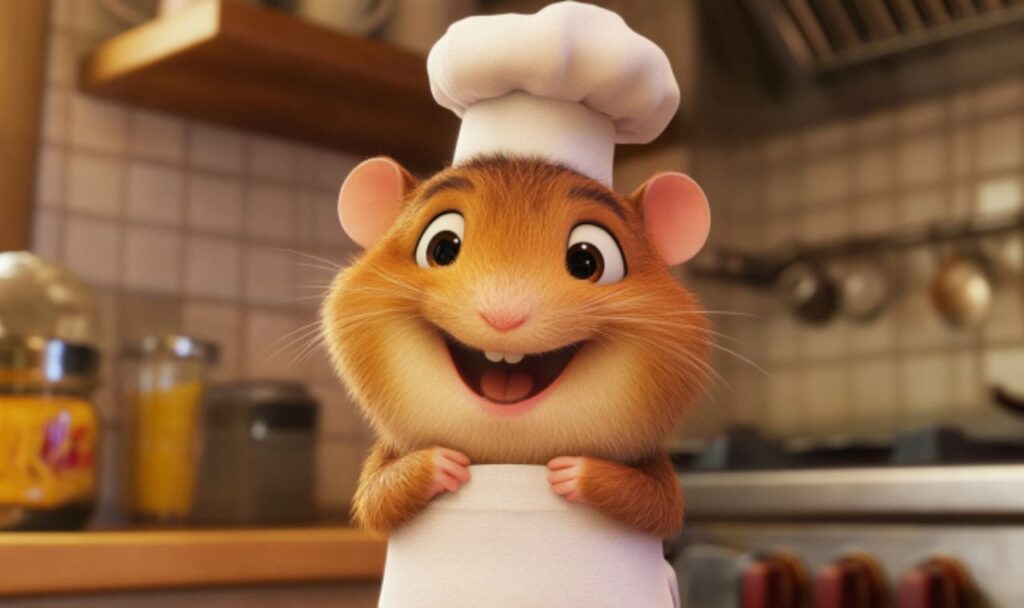
Well, my dear hamster-loving friend, we’ve come to the end of our little journey into the wonderful world of hamster nutrition. By now, you’ve learned just how important protein is for keeping your furry darling healthy, active, and full of life. It’s not just about feeding them—oh no! It’s about nurturing their tiny bodies with the right balance of nutrients so they can thrive, explore, and, let’s be honest, melt our hearts with every whisker twitch.
Providing a balanced, protein-rich diet isn’t just a chore; it’s a labor of love. It’s about giving your hamster the fuel they need to run their little marathons on the wheel, burrow through their bedding like a tiny adventurer, and scurry over to greet you with those sparkling eyes and twitching noses. It’s also about ensuring they feel their best inside and out, from their shiny coats to their boundless energy.
But remember, balance is the key to all things. While protein is essential, it’s just one part of the puzzle. Your hamster needs a variety of nutrients to stay in tip-top shape, so don’t forget to combine their protein snacks with plenty of fresh veggies, grains, and fiber-rich foods. And, of course, portion control is your best friend—those tiny tummies can only handle so much, no matter how much they beg with those adorable eyes!
As you’ve seen, there are so many options for adding protein to your hamster’s diet, from store-bought treats to natural foods and even homemade goodies. Each snack you provide is not just food but a sign of the love and care you pour into your hamster’s life. And, oh, what a rewarding experience it is to watch them thrive under your care, knowing you’re giving them the very best.
So, whether your little one is a zoomie-loving athlete or a curious explorer, a balanced diet with just the right amount of protein is the secret to ensuring they live their happiest, healthiest life. You’ve got this, my dear! With all the knowledge you’ve gained and your big hamster-loving heart, your little fluffball is in the very best hands.
Now, go ahead and spoil them with a little protein-packed snack (just the right size, of course!) and watch them happily nibble away, knowing you’ve done everything to keep them strong, active, and oh-so-loved. From one hamster caretaker to another, I’m proud of you!
SnuggleTip:
Always keep an eye on your hamster’s hideouts for uneaten protein snacks. Spoiled food can lead to tummy troubles, so give their stash a regular check to keep things fresh and safe!

